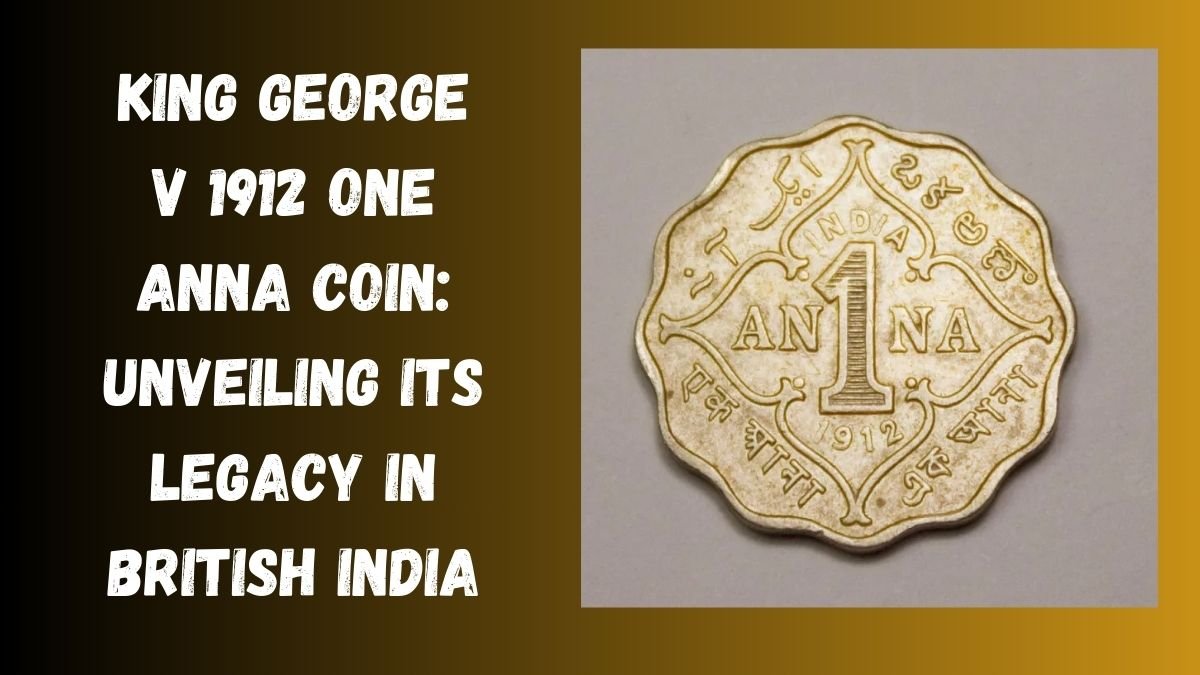The 1912 One Anna coin featuring King George V is a captivating piece of history from British India. This coin not only reflects the numismatic artistry of its era but also serves as a window into the economic and political dynamics of colonial India. In this detailed exploration, we’ll uncover the design, significance, and legacy of the 1912 One Anna coin, as well as its appeal to collectors.
Historical Context
The One Anna coin of 1912 was part of the British Empire, which King George V ruled from 1910 to 1936. It had most of India as an integral part of the empire, and the place was under colonial rule. These coins testified to the British rule over India. Coins during this period were not only a medium of exchange but also propaganda tools portraying the image of the British monarch and establishing imperial dominance.
Design and Features
[also_read id=”171″]
1912 One Anna coin is actually a work of art in terms of its aesthetic appeal alongside utility. Here are the features:
Front Side Design
- The obverse includes the profile of King George V with the words “GEORGE V KING EMPEROR.”
- Here, he is drawn in normal king dress which indicates him as a king of Britain and an emperor of India.
Reverse Design
- On the other side of the coin, it is inscribed with “ONE ANNA” in English and the same text in Hindi and Urdu which says that India is the country with its rich linguistic background.
- The design of the coin is elaborate which uses floral patterns and Indian designs and hence, provides it an excellent look
Material and Size
- The material used to make this coin is copper-nickel. This is enough to put to daily usage because of its strength.
- Its size and weight make it different, and it is also very easy to carry.
Mint Marks
- 1912 One Anna Coin was minted at several places, like Bombay (Mumbai) and Calcutta (Kolkata). Mint marks exist in case there is any origin; this has a great value for any collector.
Significance of Coin
[also_read id=”142″]
- Historical and cultural importance of 1912 One Anna coin are as follows:.
- These coins were extensively issued in the market and shops so they can be spent on the rest of the transactions involved in trade. Thus, life would have been pretty inseparable without these coins.
Iconography
- On political terms, an image of the King George V was printed in the coin; thus, it represented a sign for the rule of the British over India.
- The coin was an artifact from the colonial regime; it therefore made the Indians subject to the British regime that governed.
Iconography in Society
- The coin was written in various languages, and this spoke volumes of the richness of Indian cultural diversity even during the colonial regime.
- The design elements were rather complex and indicative of British and Indian art influences.
Rarity and Collectibility
The 1912 One Anna coin is a treasure to be sought after for a numismatist. There are several reasons for this:
Rarity
- Although millions were printed, pristine examples are extremely rare.
- A combination of natural and manmade factors like corrosion, wear, tear, erosion, and ageing lead to the appreciation of coins.
Historical Significance
- Coins from the colonial era represent a piece of Indian history. As such, they are invaluable for both history buffs and collectors.
- The 1912 coin is highly important as it marks the end of Edwardian coinage apart from its introduction of the George V series.
Rarity Variations
- Collectors often look for types, like mint errors or special mint marks on coins. This alone creates much added value.
- Fewer examples will be scarce coins of limited production regions. Other similar coins with distinction are also sought actively.
Investment
[also_read id=”166″]
- Since it is also a collectible, 1912 One Anna has been proved to be good investment; this is because their value has the tendency of going up with time.
- With heightened interest in rare British Indian coins, collectors from different parts of the world continue driving the worth of their markets.
- To the collector who would love collecting the 1912 One Anna coin, the following might prove helpful.
- If purchasing from a third party, be sure that it is authenticated through a credible numismatist or obtain from a respected dealer.
- The world of numismatics often deals with forgeries, so watch out.
Examine Condition
- The condition of the coin dictates most of its value. Those in uncirculated or mint state are highly priced compared to heavily worn coins.
- Look out for clear designs, readable inscriptions, and minimum damage
- Track market trends through auctions and recent trends in prices.
- Join the various numismatic forums and communities where updates on price and availability will be available
Take care of your coins
- Keep your coins in cases or albums to keep them from moisture, oxygen, or friction.
- Do not rub your coins using sharp objects for it might knock down the money value.
Historical Significance of 1912 One Anna Coin
This One Anna coin, minted in 1912, speaks of British India and the complexity of socio-economic and political dynamics of the era. It has a story to tell: that of colonial rule, cultural amalgamation, and life of the people who used these coins for daily transactions. It is now, however, dear to me because it connects my past to my present.
To historians, it will explain the colonial rule and the mystical function currency used to represent itself as the empire was exerted. To the collector, this is going to symbolize some form of compromise between art and history and rarer forms as well. As people continue finding out its meanings, the numismatics communities across the globe take a heightened interest in these 1912 One Anna coins.
Conclusion
King George V is really a treasure when it comes to British India-one Anna coins for the year 1912, which has historical, cultural significance, and beautiful craftsmanship about intricate designs, historical interest, and, of course, collectible values. Therefore, it is pretty much coveted in the numismatist communities. It surely goes down the route of the colonized India journey for any passionate collector or a fervent lover of history to be kept safe for the future, hence history living on.

